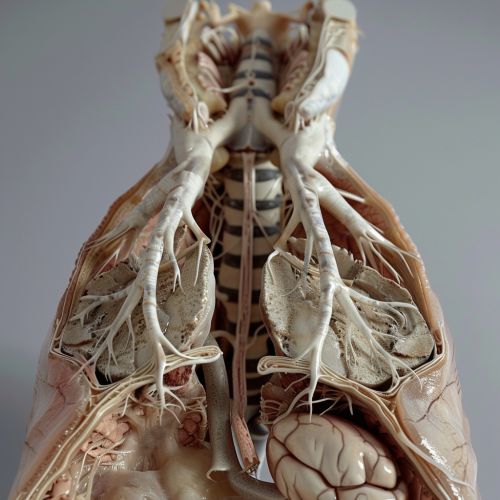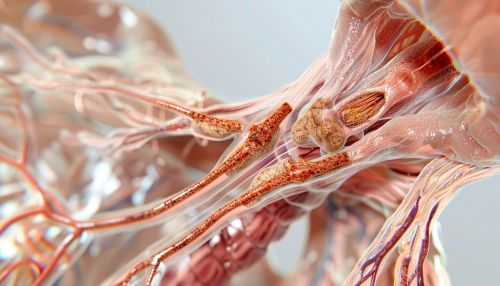Trachea
Anatomy
The trachea, commonly known as the windpipe, is a tube that connects the pharynx and larynx to the lungs, allowing the passage of air. It is an integral part of the human respiratory system. The trachea is situated just below the larynx and extends down to the chest. It is approximately 10 to 12 cm long and 2 cm in diameter in adults. The trachea is surrounded by 16 to 20 C-shaped rings of hyaline cartilage. These cartilaginous rings provide structure and prevent the trachea from collapsing during respiration.


Histology
The trachea is lined with a ciliated pseudostratified columnar epithelium, which is also known as respiratory epithelium. This epithelium is composed of several types of cells, including ciliated cells, goblet cells, and basal cells. The ciliated cells help to move mucus and trapped particles out of the lungs, while the goblet cells produce the mucus. The basal cells are stem cells that can differentiate into either ciliated cells or goblet cells.
Physiology
The primary function of the trachea is to provide a clear path for air to move in and out of the lungs. During inhalation, air enters the body through the nose or mouth, travels down the pharynx and larynx, and enters the trachea. The air then continues down the trachea and into the bronchi, which divide into smaller and smaller tubes until reaching the alveoli where gas exchange occurs.
Pathology
There are several diseases and conditions that can affect the trachea. Tracheitis is an inflammation of the trachea, usually caused by a bacterial infection. Tracheal stenosis is a narrowing of the trachea that can result from injury, surgery, or a birth defect. Tracheal cancer, although rare, can also occur.
Clinical significance
The trachea plays a crucial role in the field of medicine. It is often involved in procedures such as tracheostomy, where a hole is made in the trachea to bypass an obstructed airway, and intubation, where a tube is inserted into the trachea to provide a clear airway for surgery or for patients who are unable to breathe on their own.
